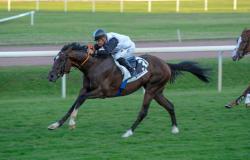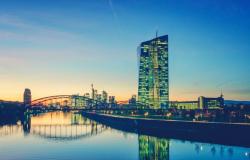The United States is “determined to put Ukraine in the best possible position to prevail” and delays in delivering crucial military aid are due only to “difficult logistics,” a senior US official said Saturday.
Participating via videoconference at the Yalta European Strategy forum held in kyiv, White House National Security Advisor Jake Sullivan assured that President Biden, who will meet his Ukrainian counterpart at the end of September at the UN General Assembly in New York, “is determined to use the last four months (of his term) to put Ukraine in the best possible position to prevail.”
While Volodymyr Zelensky and other Ukrainian leaders continue to denounce the delays in Western military aid, particularly from the United States, Jake Sullivan assured that this problem was due to difficult logistics and not to a lack of political will to support kyiv.
“It’s not a question of political will. It’s a question of difficult and complicated logistics (…) to deliver this material to the front,” he said.
On the ground, a new prisoner exchange was organized between Russia and Ukraine: it involved a total of 206 prisoners (103 in each camp).
The Russian army also claimed to have captured a village in the eastern Ukrainian region of Donetsk, where it continues to advance against kyiv’s fewer and less well-equipped troops.
On Saturday, the Russian Defense Ministry said that 103 Russian servicemen taken prisoner in the Kursk region had been exchanged for the same number of Ukrainian prisoners of war.
– Emirati mediation –
According to the Russian ministry, the United Arab Emirates made “mediation efforts” to enable the exchange to take place.
On Telegram, Volodymyr Zelensky said Saturday that the exchange had allowed the release of Ukrainian soldiers and police officers who had defended kyiv, Donetsk, Mariupol and its Azovstal plant, as well as the regions of Lugansk, Kharkiv and Zaporizhzhia.
The day before, Mr Zelensky had announced that 49 Ukrainian prisoners had returned from Russia. On August 24, Moscow and kyiv carried out an exchange of 230 prisoners, including Russian soldiers captured in the Kursk region.
In a separate statement, the Russian military said Saturday it was continuing “offensive operations” in the Kursk region. On Thursday, it announced for the first time that it had regained ground there in a counterattack.
And on Saturday it claimed the capture of a new village in the Ukrainian region of Donetsk, that of Jelanne Perche, in the district of Pokrovsk, an important logistics hub threatened by Moscow.
On the defensive for months on the front, Ukraine launched a surprise attack on August 6 in the Russian region of Kursk, where it seized several hundred square kilometers.
She hoped to force Moscow to redeploy its troops in the Donetsk region and thus slow their advances.
– “I can do more” –
On the diplomatic front, Volodymyr Zelensky is still demanding that his allies allow him to strike military targets deep on Russian soil.
But so far, the West, led by the Americans, has been hesitant to give a possible green light to kyiv’s use of long-range missiles, fearing that such a decision could be seen by Russia as an escalation.
Vladimir Putin said on Thursday that if the West allowed Ukraine to strike Russian territory with longer-range missiles, it would mean that “NATO countries are at war with Russia.”
Volodymyr Zelensky, for his part, accused his allies on Friday of being “afraid” to raise the possibility of shooting down Russian drones and missiles in Ukrainian skies themselves, while his country is facing numerous air attacks.
kyiv said on Saturday that it had shot down another 72 Russian drones during the night.
Washington currently allows kyiv to strike only Russian targets in occupied parts of Ukraine and some in Russian border regions directly related to military operations.
In kyiv, an adviser to President Zelensky for strategic affairs, Oleksandr Kamyshin, also assured that his country was capable of producing more weapons itself but lacked the necessary funding.
“The limit is not in our production capacities, everything is connected with financing,” said Mr. Kamyshin. “All production structures tell us: ‘I can do more, but I need financing’.”
Ukraine’s weaponry still relies mainly on Soviet-made stocks and those supplied by its Western allies. But it has significantly stepped up production of its own weapons since the start of the Russian invasion.
According to Mr. Kamyshin, kyiv can provide only $7 billion from its budget, while its “(production) capacity is $20 billion per year in 2024.”
bur-rco/cls/mm/ib






